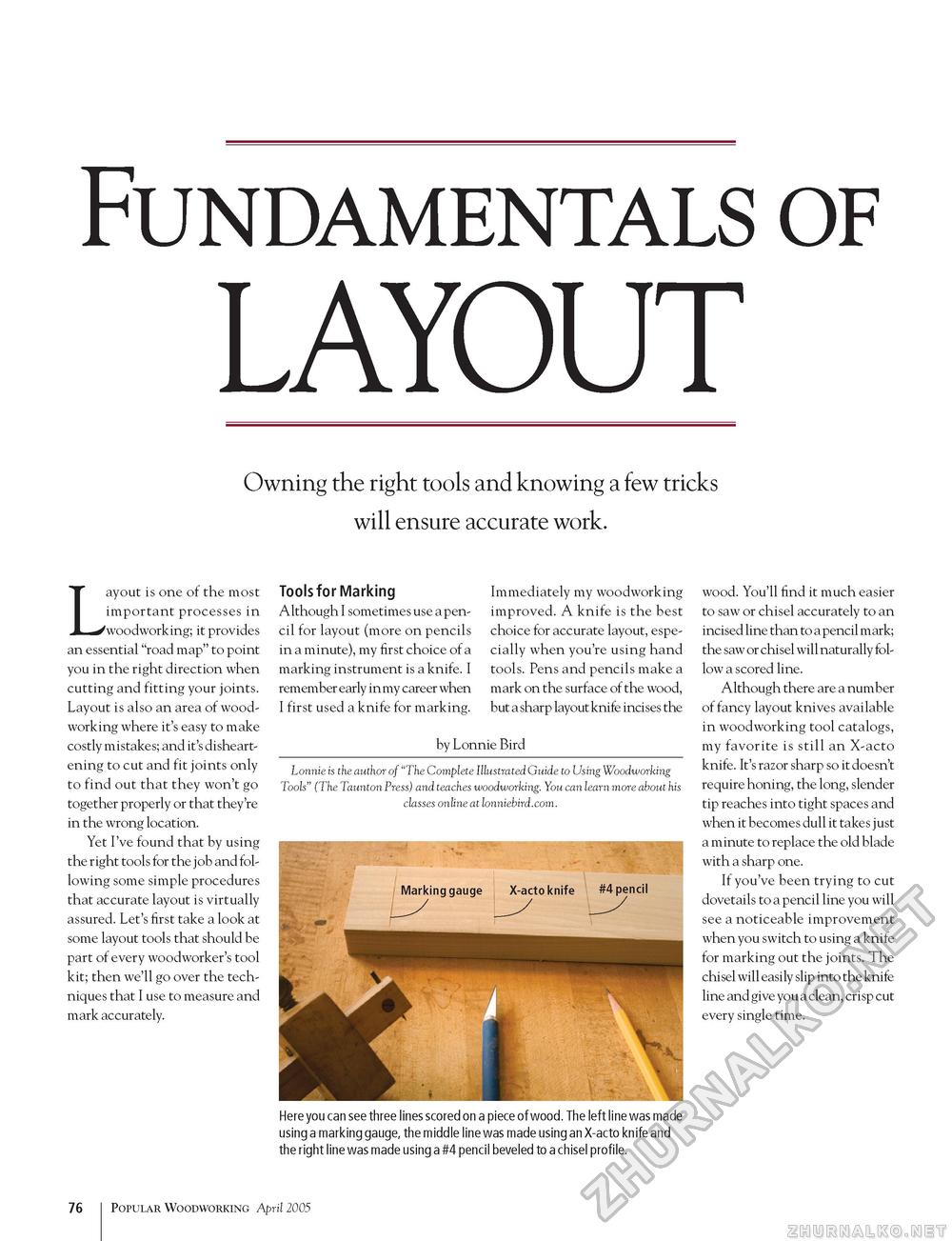Popular Woodworking 2005-04 № 147, страница 79
Fundamentals of LAYOUTOwning the right tools and knowing a few tricks will ensure accurate work. Layout is one of the most important processes in woodworking; it provides an essential "road map" to point you in the right direction when cutting and fitting your joints. Layout is also an area of woodworking where it's easy to make costly mistakes; and it's disheartening to cut and fit joints only to find out that they won't go together properly or that they're in the wrong location. Yet I've found that by using the right tools for the job and following some simple procedures that accurate layout is virtually assured. Let's first take a look at some layout tools that should be part of every woodworker's tool kit; then we'll go over the techniques that I use to measure and mark accurately. Tools for Marking Although I sometimes use a pencil for layout (more on pencils in a minute), my first choice of a marking instrument is a knife. I remember early in my career when I first used a knife for marking. Immediately my woodworking improved. A knife is the best choice for accurate layout, especially when you're using hand tools. Pens and pencils make a mark on the surface of the wood, but a sharp layout knife incises the wood. You'll find it much easier to saw or chisel accurately to an incised line than to a pencil mark; the saw or chisel will naturally follow a scored line. Although there are a number of fancy layout knives available in woodworking tool catalogs, my favorite is still an X-acto knife. It's razor sharp so it doesn't require honing, the long, slender tip reaches into tight spaces and when it becomes dull it takes just a minute to replace the old blade with a sharp one. If you've been trying to cut dovetails to a pencil line you will see a noticeable improvement when you switch to using a knife for marking out the joints. The chisel will easily slip into the knife line and give you a clean, crisp cut every single time. by Lonnie Bird Lonnie is the author of "The Complete Illustrated Guide to Using Woodworking Tools" (The Taunton Press) and teaches woodworking. You can learn more about his classes online at lonniebird.com. Here you can see three lines scored on a piece of wood. The left line was made using a marking gauge, the middle line was made using an X-acto knife and the right line was made using a #4 pencil beveled to a chisel profile. 76 1 Popular Woodworking April 2005 |








